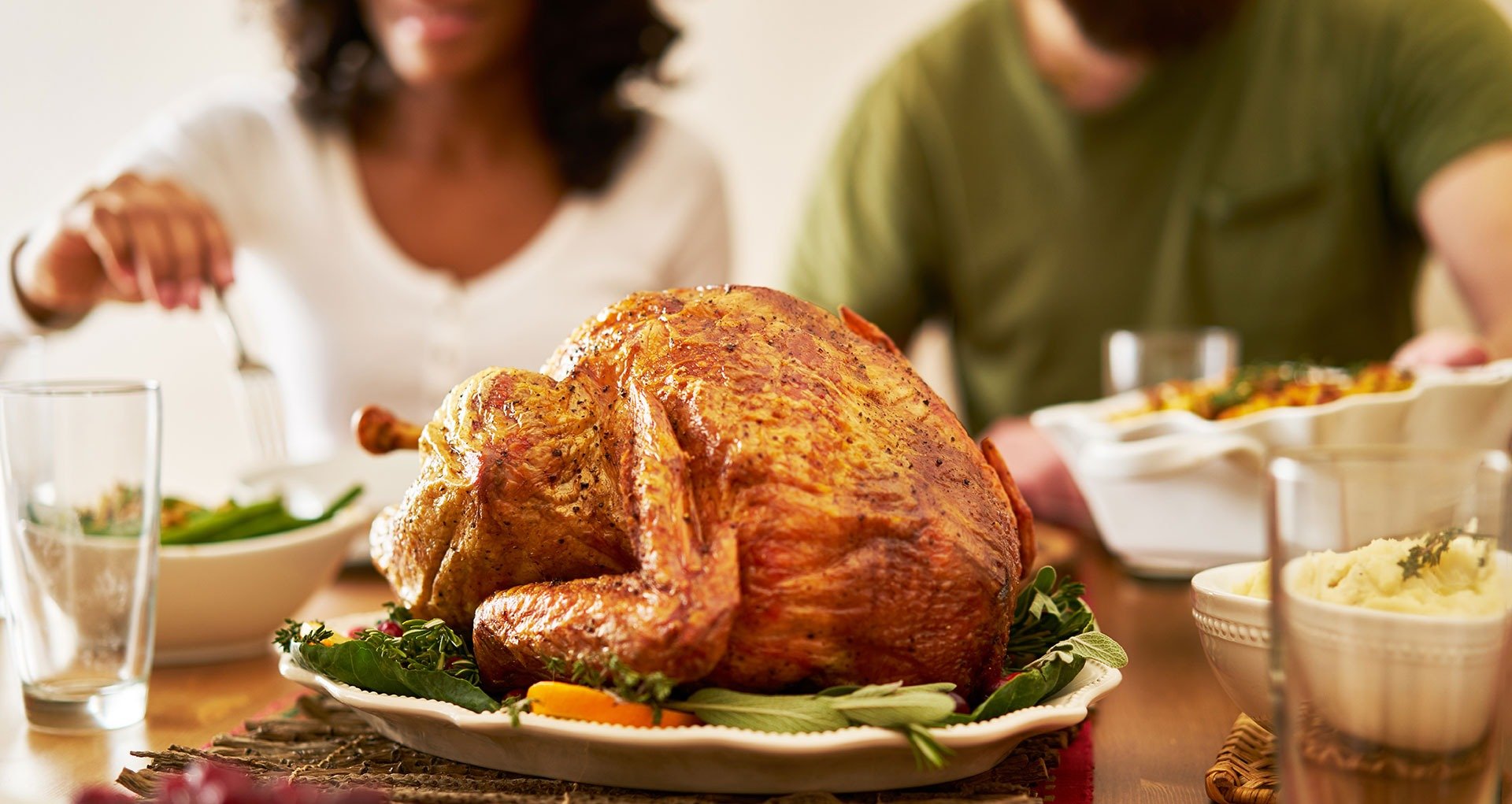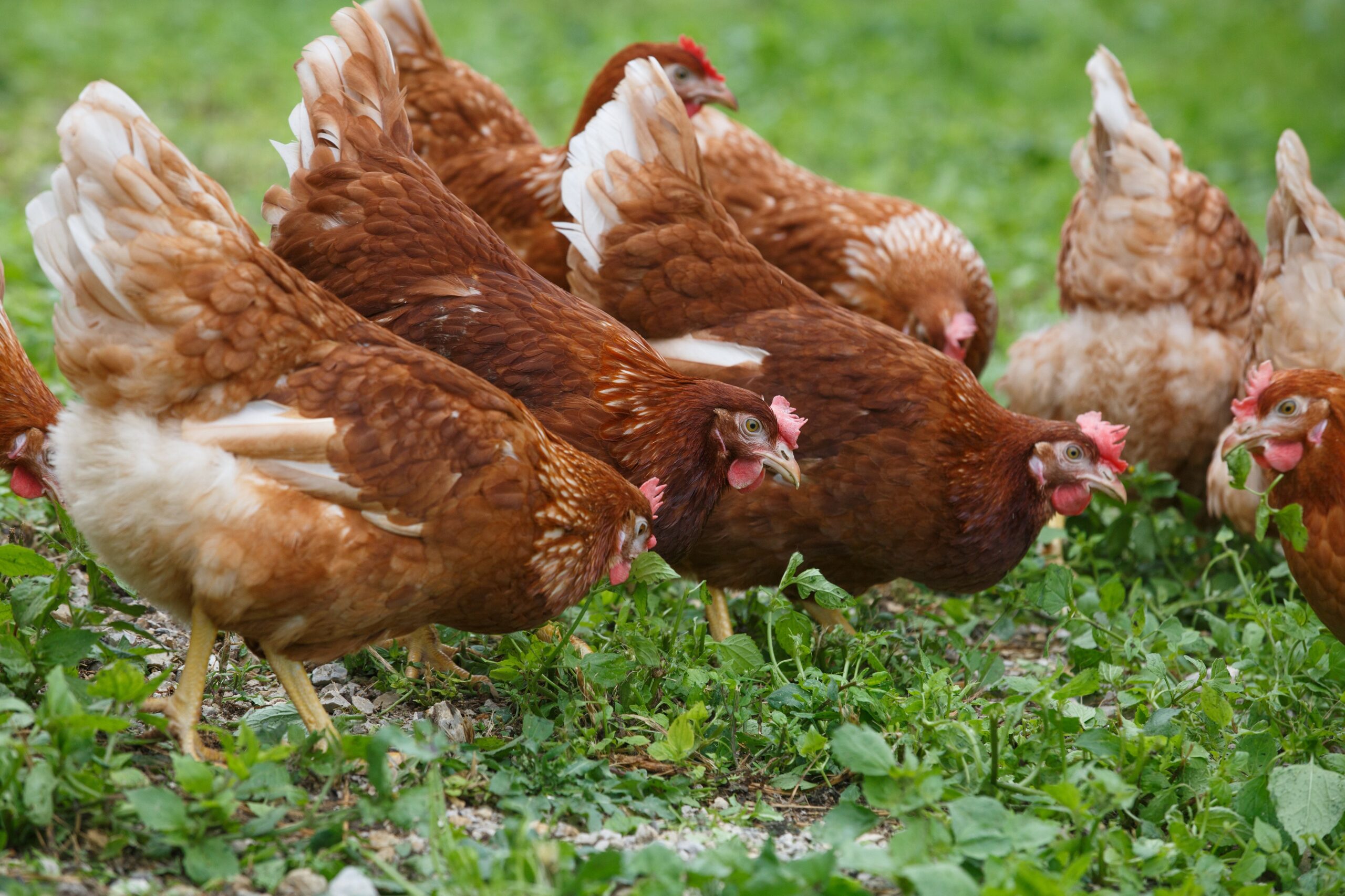Your guide to buying and cooking a heritage turkey for Thanksgiving
If you eat turkey and are interested lowering your Thanksgiving foodprint — having a meal that is better for people, animals and the environment — consider getting a heritage bird. “Heritage,” similarly to “heirloom,” refers to breeds that have remained unchanged over many generations — turkeys prized for their flavor and not necessarily their size. They’re completely different from Butterball and other commercially raised turkey breeds, which have been bred to produce the maximum amount of breast meat in as short a time as possible.
Because they are genetically similar to wild turkeys and often live on smaller farms that use more humane practices, heritage turkeys tend to live better lives than those raised in the confinement of concentrated animal feeding operations (or CAFOs), which also have a detrimental environmental impact. Industrial operations often feel the need to add salt or flavor enhancements to their final product; heritage breeds, in addition to having a much smaller foodprint, also taste better.
Animal welfare and heritage turkey farms
In 2014, Butterball announced that its turkeys had been American Humane Certified. But as animal welfare labels go, this is not a very meaningful one, indicating only minor improvements in conditions at best. If you truly care about animal welfare, a heritage bird is a better option. Some heritage turkey producers will also have certifications, such as Animal Welfare Approved, one of FoodPrint’s top picks, or Certified Humane. You can learn more about poultry labels in our Food Label Guide — and more about turkey production in our piece on the true cost of industrially raised turkeys.
Heritage turkey cost
When you buy a heritage turkey, you will pay more — especially when some supermarkets offer Butterballs for free at holiday times — but you will be supporting a small- to mid-sized producer. And in buying from a farm that’s committed to maintaining the legacy of old breeds, you yourself will be helping to preserve biodiversity in the food system. Think about adjusting for the added costs by serving less turkey per person and beefing up on sides. Everyone’s in it for the green bean casserole anyway.
How to find a heritage bird
A great place to start is your local farmers’ market (or farm, if you’re lucky enough to live near one). Specialty food stores will often sell heritage birds around the holidays — talk to a manager if you’re wondering whether they’ll be in stock. Independent or natural food stores — from small co-ops to Whole Foods — may have them as well. If none of these options are available to you, you can check out Heritage Foods USA, an excellent online retailer that sells birds raised by renowned breeder Frank Reese.
How to cook a heritage bird
Heritage birds are quite different from mass-produced supermarket turkeys, and require different cooking techniques as well: Brining and cooking “slow and low” will keep the bird from drying out. For tips on how to cook heritage turkeys to maximum deliciousness, watch this YouTube video featuring the Fabulous Beekman Boys.
Get the latest food news, from FoodPrint.
By subscribing to communications from FoodPrint, you are agreeing to receive emails from us. We promise not to email you too often or sell your information.
Top photo by kolesnikovserg /Adobe Stock.
More Reading
Can scorecards push supermarkets to do better?
December 9, 2024
What to know about nonstick cookware
December 6, 2024
Resources to help you pickle, ferment, jam, can and more
October 16, 2024
Quinces are due for a renaissance
September 16, 2024
Six unusual greens to try
September 4, 2024
Can sushi be sustainable?
August 26, 2024
These 5 new cookbooks will help you master late-summer eating
July 29, 2024
Cooking oils and sustainability
July 26, 2024
Celebrate seasonal eating with our 5-night late-summer meal plan
July 22, 2024
Interested in foraging your food? Try a guided tour
May 29, 2024


